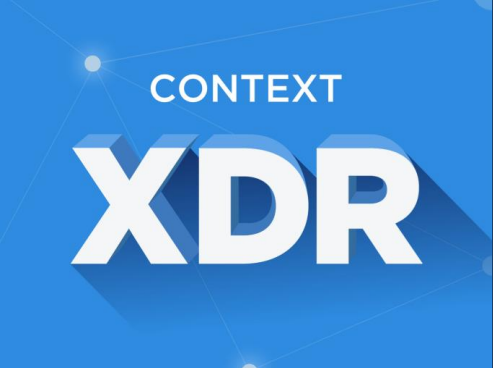XeneX XDR+
XeneX XDR, or Extended Detection and Response, is an advanced cybersecurity solution designed to improve threat detection, investigation, and response capabilities across an organization's digital environment. XeneX XDR builds upon the foundation of traditional endpoint detection and response (EDR) solutions by expanding its scope to include broader data sources, such as network traffic, cloud services, and email, among others. The goal of XDR is to provide a more comprehensive and unified approach to threat detection and response.
XeneX XDR addresses the evolving and complex nature of modern cyber threats, which often span multiple attack vectors and stages. By combining data from diverse sources and using advanced analytics, XeneX XDR aims to provide organizations with better visibility into their security posture, quicker threat detection, and more effective incident response, ultimately enhancing overall cybersecurity defenses.
XeneX XDR empowers organizations to improve their ability to detect, respond to, and mitigate a wide range of cybersecurity threats, ultimately enhancing their resilience against today's complex and sophisticated threat landscape.
XeneX XDR Key features and aspects include:
Data Collection: XeneX XDR collects and correlates data from various sources, including endpoints, servers, network traffic, cloud services, and more. This extensive data collection allows for a more holistic view of potential threats.
Advanced Analytics: XeneX XDR employs advanced analytics, machine learning, and behavioral analysis to identify anomalous and potentially malicious activities across different data sources. By analyzing patterns and behaviors, XDR can detect sophisticated and multi-stage attacks.
Threat Detection: XeneX XDR continuously monitors and analyzes the collected data for signs of suspicious or malicious activities, such as unauthorized access, lateral movement, data exfiltration, and more.
Automated Response: Upon detecting a potential threat, XeneX XDR can initiate automated responses, such as isolating compromised systems, blocking malicious processes, and triggering alerts to security teams.
Investigation Tools: XeneX XDR provides XeneX security analysts with tools to investigate and analyze detected threats more thoroughly. This may include timeline views, root cause analysis, and contextual information to aid in understanding the full scope of an attack.
Cross-Platform Visibility: XeneX XDR provides a unified dashboard that presents insights and alerts from various data sources, enabling security teams to monitor and respond to threats across different parts of the organization's infrastructure.
Threat Hunting: XeneX XDR allows XeneX security teams to proactively search for hidden or emerging threats that may not have triggered automated alerts. Threat hunting involves analyzing data and looking for patterns or indicators of compromise.
Integration: XeneX XDR solution integrates with other XeneX cybersecurity platform tools, such as SIEM (Security Information and Event Management), EDR, and threat intelligence platforms, to provide a more comprehensive defense strategy.
XeneX XDR (Extended Detection and Response) offers several benefits that can significantly enhance an organization's cybersecurity posture and ability to detect and respond to advanced and evolving threats.
Here are some key advantages of implementing XDR:
Comprehensive Threat Visibility: XeneX XDR aggregates data from multiple sources, including endpoints, networks, cloud services, and more. This provides a holistic view of the organization's digital environment, allowing for a more accurate and complete understanding of potential threats.
Early Threat Detection: XeneX XDR uses advanced analytics, behavioral analysis, and machine learning to identify suspicious activities and indicators of compromise across various data sources. This enables early detection of threats, reducing the dwell time of attackers within the network.
Reduced False Positives: XeneX XDR's advanced analytics help filter out false positives and focus on genuine threats, allowing security teams to prioritize their efforts and resources more effectively.
Automated Response: XeneX XDR can automate certain response actions based on predefined rules, such as isolating compromised endpoints or blocking malicious processes. This helps contain threats and mitigate their impact before they escalate.
Faster Incident Response: XeneX XDR streamlines incident response by providing security teams with contextual information, timeline views, and other investigative tools. This speeds up the process of understanding and mitigating threats.
Threat Hunting: XeneX XDR enables proactive threat hunting by allowing security analysts to search for indicators of compromise and emerging threats across the organization's data sources.
Cross-Platform Coverage: XeneX XDR extends its capabilities across various platforms, including endpoints, networks, and cloud environments, ensuring consistent threat detection and response across the entire infrastructure.
Integration with Existing Tools: XeneX XDR solutions often integrate with other security tools, such as SIEMs, EDRs, and threat intelligence platforms, enhancing the organization's overall security ecosystem.
Centralized Management: XeneX XDR provides a unified dashboard that consolidates alerts and insights from different sources, simplifying the monitoring and management of security events.
Scalability: XeneX XDR can scale to accommodate the growing needs of organizations, making it suitable for businesses of different sizes and industries.
Regulatory Compliance: XeneX XDR's ability to monitor and detect threats can help organizations meet compliance requirements by ensuring proper data protection and security measures are in place.
Enhanced Security Posture: By providing better visibility and faster response to threats, XeneX XDR contributes to an organization's overall security posture, reducing the risk of data breaches and other security incidents.
Threat Intelligence and Trend Analysis: XeneX XDR's data collection and analysis capabilities contribute to threat intelligence and trend analysis, helping organizations understand emerging attack patterns and adjust their defenses accordingly.
Cost-Effectiveness: XeneX XDR is a cost-effective solution compared to building and maintaining separate solutions for endpoint, network, and cloud security.
Adaptation to Evolving Threats: XeneX XDR's continuous monitoring and advanced analytics enable organizations to stay ahead of evolving cyber threats and tactics used by attackers.

